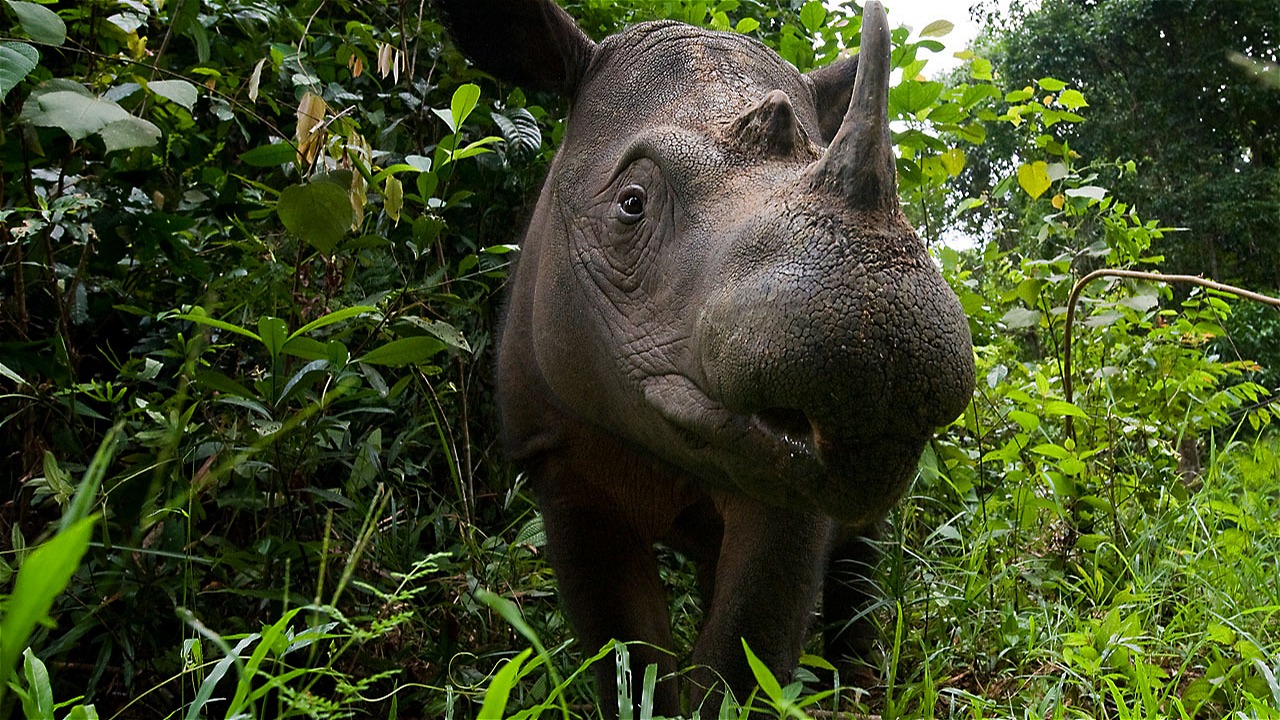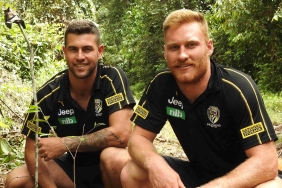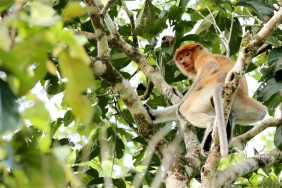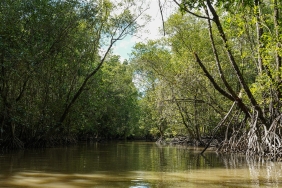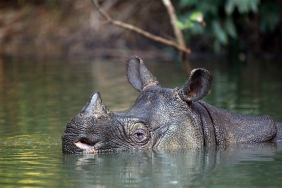TWO-HORNED RESCUE MISSION IN SOUTHERN SUMATRA (2)
By: Hijrah Nasir (Communication and Education Officer WWF-Indonesia Southern Sumatra Program)
The two-horned Sumatran rhinoceros (Dicerorhinus sumatrensis), a species estimated to have inhabited the Earth since 50 million years ago, is considered the only surviving primitive relative of the rhino (Goossent et al. 2013). Unfortunately, the distribution and population of this ancient animal has continued to decline in recent decades, requiring a special mission to save the two-horned one from extinction. One of these species is found in Bukit Barisan Selatan National Park (TNBBS). Therefore, as one of the efforts to save the two-horned, WWF-Indonesia through the support of TFCA Sumatra (Tropical Forest Conservation Action Sumatra) held a Sumatran Rhino Survey Learning Sharing Training in Bukit Barisan Selatan National Park.
One of the difficulties of the field team when conducting Sumatran Rhino surveys in TNBBS is distinguishing signs of rhino and tapir presence. Tapirs, which are categorized by the IUCN as endangered, are commonly found in the TNBBS area. Both Sumatran rhinos and tapirs have similar footprints, as well as feces. This training is expected to increase the capacity of the survey team to recognize signs of the presence of Sumatran Rhinos and be able to distinguish signs of their presence from other animals, especially tapirs (Tapirus indicus).
"Just like other mother animals, female rhinos are very protective of their cubs. It is not uncommon for her to pile up her cubs' feces and treads with her own treads and feces to eliminate her cubs' traces so that they are protected from predators and human disturbances. Interestingly, at three weeks old, rhino calves eat their mother's feces to introduce microbes into their digestion. Rhinos have a prehensile or browser lip shape that serves to attract or grab young shoots. In addition, rhinos also spray urine to mark territory, as a means of communication and in response to stress. One thing that needs to be ensured when conducting surveys is that if you find signs of rhino presence such as footprints, then you need to look for other signs of findings, such as plintiran, feces, or scratches, "explained Arif Rubianto from the Indonesian Rhino Foundation RPU.
On that occasion, participants practiced making a plaster cast of a rhino's footprint as part of the Sumatran Rhino trajectory survey. Trajectory is considered a very promising method, especially to address the needs in the field. To confirm the rhino's footprint, one thing that can be done is to make a plaster cast of the footprint from a mixture of gypsum and white cement mixture. This will help the field team confirm that the footprint found is indeed a rhino footprint.
One of the interesting discussions in this training is environmental genetic material and practicum (E-DNA). Along with the advancement of science, especially genetics, nowadays signs of animal existence can be analyzed without having to take body parts from the species. This is because rhinos are animals that can rarely be found directly in nature, which makes their traces increasingly difficult to find. To make it easier for teams in the field to take genetic samples of rhinos, we can take water samples from puddles or running water that are thought to be the rhino's home range. During the local training, the team took water samples at Kubu Perahu River as part of the e-DNA training practice.
"The purpose of this training is to practice rhino DNA sampling to collect and integrate materials scattered in nature, such as loose skin particles or other parts through the medium of water in rhino burrows using DNA barcoding research. The DNA analysis of the species using meta-barcoding is the first of its kind in Indonesia. In the future, we hope this approach can help advance research related to animal DNA, including endangered animals such as rhinos," explained Mochammad Samsul Zein, a researcher from LIPI who was also a presenter in this training.
By utilizing comprehensive survey methods, it is hoped that the results of the Sumatran Rhino survey can be carried out optimally. The role of all parties is needed in this effort. Let's together support the mission to save the Two-Horned in South Sumatra by protecting the forests where they live. Reducing the use of paper and tissue is one simple way we can do to support it.

